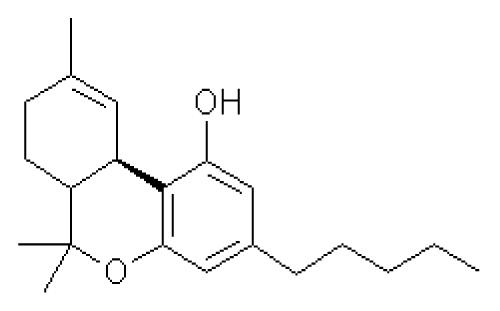“Cannabidiol (CBD), the major non-psychoactive phytocannabinoid present in the plant Cannabis sativa, has displayed beneficial pharmacological effects in the treatment of several neurological disorders including, epilepsy, Parkinson’s disease, and Alzheimer’s disease. In particular, CBD is able to modulate different receptors in the endocannabinoid system, some of which belong to the family of G-protein-coupled receptors (GPCRs). Notably, while CBD is able to antagonize some GPCRs in the endocannabinoid system, it also seems to activate others. The details of this dual contrasting functional feature of CBD, that is, displaying antagonistic and (possible) agonistic ligand properties in related receptors, remain unknown. Here, using computational methods, we investigate the interacting determinants of CBD in two closely related endocannabinoid-activated GPCRs, the G-protein-coupled receptor 55 (GPR55) and the cannabinoid type 1 receptor (CB1). While in the former, CBD has been demonstrated to function as an antagonist, the way by which CBD modulates the CB1 receptor remains unclear. Namely, CBD has been suggested to directly trigger receptor’s activation, stabilize CB1 inactive conformations or function as an allosteric modulator. From microsecond-length unbiased molecular dynamics simulations, we found that the presence of the CBD ligand in the GPR55 receptor elicit conformational changes associated with antagonist-bound GPCRs. In contrast, when the GPR55 receptor is simulated in complex with the selective agonist ML186, agonist-like conformations are sampled. These results are in agreement with the proposed modulatory function of each ligand, showing that the computational techniques utilized to characterize the GPR55 complexes correctly differentiate the agonist-bound and antagonist-bound systems. Prompted by these results, we investigated the role of the CBD compound on the CB1 receptor using similar computational approaches. The all-atom MD simulations reveal that CBD induces conformational changes linked with agonist-bound GPCRs. To contextualize the results we looked into the CB1 receptor in complex with a well-established antagonist. In contrast to the CBD/CB1 complex, when the CB1 receptor is simulated in complex with the ligand antagonist AM251, inactive conformations are explored, showing that the computational techniques utilized to characterize the CB1 complexes correctly differentiate the agonist-bound and antagonist-bound systems. In addition, our results suggest a previously unknown sodium-binding site located in the extracellular domain of the CB1 receptor. From our detailed characterization, we found particular interacting loci in the binding sites of the GPR55 and the CB1 receptors that seem to be responsible for the differential functional features of CBD. Our work will pave the way for understanding the CBD pharmacology at a molecular level and aid in harnessing its potential therapeutic use.”
https://pubmed.ncbi.nlm.nih.gov/36016551/
https://www.frontiersin.org/articles/10.3389/fphar.2022.945935/full











